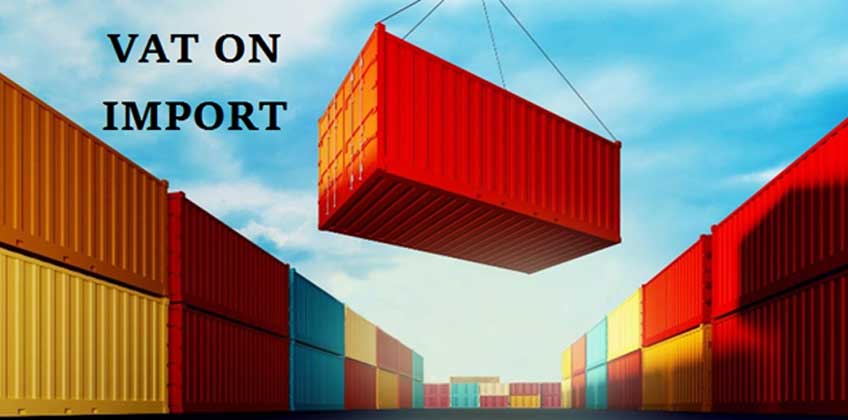Following the introduction of Value Added Tax (VAT) in the United Arab Emirates (UAE) on 1 January 2018, VAT became due on the import of goods into the UAE. Businesses which are registered for VAT in the UAE are able to defer the payment of import VAT and account for the VAT due on their VAT returns via the reverse charge mechanism, whereas non-VAT registered importers are required to make cash payments of the VAT due at the point of import.
If you are a person not registered for VAT, you can pay through one of the certified import clearance companies registered with the Federal Tax Authority (FTA)
The import of goods which is declared through UAE customs, needs to be declared in box no. 6 ‘Goods Imported into the UAE’ under the ‘Sales and All other Outputs’ section of the VAT form 201 box no. 6 will include the net value and the output VAT due on the goods which have been imported to UAE. The value and output VAT will be auto-populated, based on imports, which you have declared under your customs registration number, which is linked to your TRN. The value subject to VAT will include customs value as defined in the Customs legislation including value of insurance, freight, customs fees (if any) and applicable Excise Tax on the import of the goods into the UAE. As a result, VAT will be calculated on the net value, which is inclusive of all the above taxes and charges.
As the details are auto-populated in box no. 6, you should check the values which have been included in this box and match the values you expected to declare, based on the import declarations you have submitted during the tax period. If there is any difference, it should be reported in box no. 7 of the VAT form 201 during Tax Return filing
This box will also include the details of imports made by an agent on behalf of non-registered persons. If you are an agent who imports goods into the UAE on behalf of non-registered persons, it is the responsibility of the agent to pay the tax in respect of import of goods. Therefore, such imports will also appear in this box.
If the values populated in box no. 6 regarding goods imported into the UAE, is incomplete or incorrect – like few imports are excluded or appear to be incorrect, then such adjustments need to be reported in box no. 7 ‘Adjustments to goods imported into UAE
Depending on the difference in box no. 6, either value or output VAT can be adjusted. The amount of adjustment to be reported in this box could be positive or negative, and the taxpayer should be able to justify the adjustments when asked by the FTA.
For example, if you have imported goods worth 2 million AED plus VAT, and this import does not appear to be included within box no. 6, you can manually include this within box no. 7 (i.e. 2 million) and the respective VAT amount.
Also, if you have imported any goods which are not subject to the standard rate of VAT of 5% (for example goods subject to the 0% VAT rate), please use box no. 7 to adjust the VAT amount accordingly, as by default all of your imports will be assumed to be subject to the 5% VAT rate.
Please note, that it is the taxpayer’s responsibility to identify such adjustments and accordingly adjust them in box no. 7 of the VAT Form 201 during Tax Reutrn Filing. Similar adjustment needs to be done in case of the agent importing goods on behalf of the non-resident.
There will be situations where a VAT registered owner of the goods may request another VAT registered person (“importing agent”) to import goods on behalf of the former. This will happen when the person importing the goods is, for example, an agent of the owner of the goods, or in some cases, the customer of the owner of the goods.
In the above situations, as the VAT registered importing agent would have provided their TRN at the time of importation of the goods, the VAT amount would be automatically pre-populated in Box 6 of the VAT Return of the importing agent.
As the importing agent is not the owner of the goods at the time of importation, it is unable to recover VAT incurred on the importation.
The importing agent and the owner of the goods would be required to make adjustments in Box No. 7 of the VAT return. The importing agent would make a deduction of the value of goods imported and the owner would declare the value of goods imported.
As a consequence, the value of the imported goods will be reflected in the VAT return of the actual owner of the goods.
The owner would then be entitled to recover the import VAT (as declared in Box No. 7 of the VAT Return) in Box No. 10 of the VAT Return as per its normal VAT recovery position.
Where the owner and the importing agent do not wish to make the adjustments stated in the preceding paragraphs, the importing agent may issue a statement to the owner, which contains, at the minimum, all of the following details:
The statement will be considered as a Tax invoice for the purpose of recovering input tax by the owner and can be recovered via Box 9 of the tax return.

